 |
 |
 |
 |
 |
 |
 |
|||||||||||||
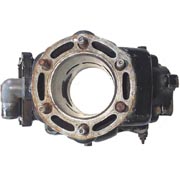 |
1984 -85 Honda CR250 CylinderThe CR250 went water cooled in 1981 and early models have a steel bore surface and no exhaust valve system. The 1984 & 85 models have the ATAC exhaust system, and 1986 models onwards have different versions of an HHP exhaust powervalve system and a Nikasil plated bore. ATAC System: The Honda Automatic Torque Amplification Chamber system works by effectively increasing or decreasing the volume of the exhaust system with a small butterfly valve located just before the exhaust connection. At low RPM a centrifugal crankshaft driven gear opens the valve into a small chamber and increases the volume of the exhaust by allowing the exhaust gases to flow through the chamber. At high RPM the ATAC valve is closed and the exhaust simply exits into the expansion chamber. For a reason that is probably very clear to two stroke designers, a larger exhaust volume benefits power at low RPM and visa versa. The 1984 model had a remote chamber on the a barrel mounted exhaust header (barrel shown) and the 1985 model had the chamber as part of the barrel assembly. The HPP System: The Honda Power PThis barrel is not really suited for a scooter because getting the ATAC system to work would be very difficult. Other manufacturers have the actuating system outside the barrel so it could be adapted to a servo control on a scooter. The Honda barrel has a small linkage at the bottom right of the barrel just in front of the casing stud which is run off the crankshaft. While it would not be impossible to work out a way to actuate the ATAC valve when mounted on a scooter, it would be an easier excercise to use a different barrel. I am guessing that the linkage from the crankcase on the 1986 models onwards is the same, although it operates the HHP valve instead. A quick fit shows that the 1986 barrel does fit on the 1984 casings so there may be many crossover parts between the engines. |
||||||||||||||||||
|
Top View
|
|||||||||||||||||||
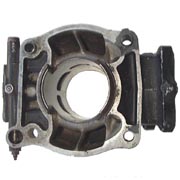 |
|||||||||||||||||||
|
Left Side View
|
|||||||||||||||||||
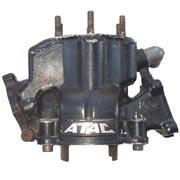 |
|||||||||||||||||||
|
Left Side View
|
|||||||||||||||||||
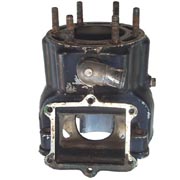 |
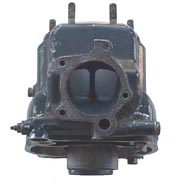 |
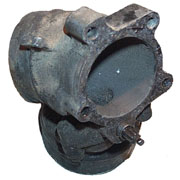 |
|||||||||||||||||
|
Intake View
|
Exhaust View
|
ATAC Exhaust Header
|
|||||||||||||||||